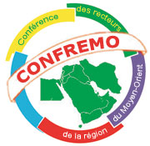Syndromes hémophagocytaires d'origine génétique
Résumé
Both the innate and adaptive immune responses use tightly regulated control systems, the complexity of which begins to emerge. The deregulation of one of these mechanisms characterizes the hemophagocytic syndrome (SH), which manifests as an uncontrolled expansion of polyclonal T lymphocytes and macrophage activation. SH are potentially fatal immune disorders characterized by hypercytokinemia and cell infiltration of organs leading to the clinical and laboratory features of SH. Viral infections and other triggers can induce both inherited and acquired forms of HLH. Disease-causing mutations in the genes encoding perforin (PRF1, FHL2), Munc13-4 (UNC13D, FHL3), and syntaxin 11 (STX11, FHL4) have been previously identified in Familial Hemophagocytic Lymphohistiocytosis (FHL), whereas mutation in RAB27A and LYST account for Griscelli syndome type 2 and Chediak-Higashi syndrome, respectively. All these genes encode proteins involved in the cytotoxic activity of lymphocytes. The inability of activated cytotoxic cells to clear antigen-presenting targets results in sustained immune stimulation, likely accounting for the unremitting polyclonal CD8 T-cell activation and hyperimmune reaction which characterizes FHL. Treatment of HLH consists of elimination of the trigger and immunosuppressive treatment in order to induce remission from the uncontrolled inflammation. Allogeneic hematopoietic stem cell transplantation is indicated in the inherited forms of HLH.
| Origine | Accord explicite pour ce dépôt |
|---|
Loading...
